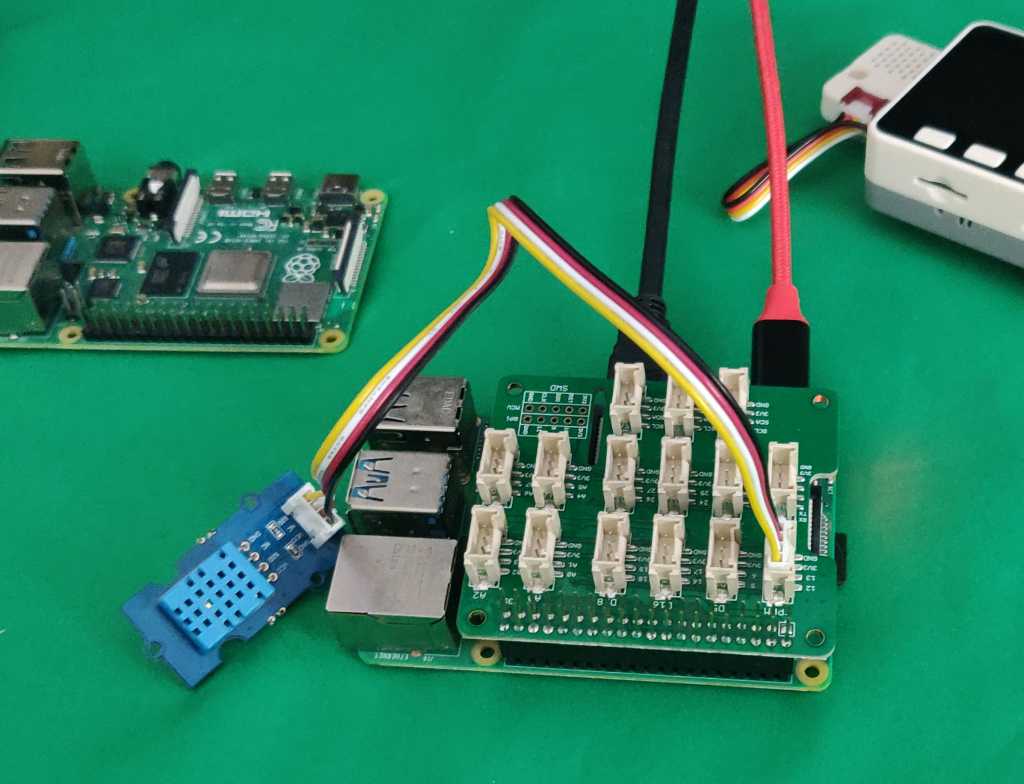
Hi !
Following on my previous post on reading the sensor values, today’s I’ll share a new code sample, triggering this information as device telemetry in Azure IoT.
In the references section, you can find some tutorials on how to create an Azure IoT Hub, and also how to create a Edge Device on the Azure IoT Hub. At the end, for this sample, we will need the connection string associated the new created device.
Once we have the connection string, the following code:
- Create a new Azure IoT Device client and connect to the Azure IoT Hub using the connection string.
- Create a new thread listening for device twin properties changes. If a property named. “RefreshInterval” is defined, the app will use the property value as new refresh interval in the read sensor values loop.
- Initialize a sensor using the Grove libraries.
- Read the temperature and humidity and trigger a new message including this information in the body, and also temperature and humidity as message properties
Once the app is running on the Raspberry Pi, we can use Azure IoT Explorer to check the messages. Note the body with the JSON information, and also the message properties including humidity and temperature as separated properties.

Of course the same information is also printed to the console.

And, finally the photo with the simple layout of the device parts.

In my next post, let’s package all of this in an Azure IoT Module.
References
Happy coding!
Greetings
El Bruno
More posts in my blog ElBruno.com.
More info in https://beacons.ai/elbruno
Azure ☁ IoT
- Install ☁ Azure IoT on Raspberry Pi
- Deploy ☁ Azure Blob Storage on IoT Edge, lessons learned
- Connect to ☁ Azure Blob Storage on IoT Edge using Microsoft Azure Storage Explorer
- Lesson learned and tips on how to install Azure IoT Edge on Ubuntu on a Raspberry Pi
- Azure IoT Explorer, in preview and awesome
- Mapping a local ☁ Azure IoT Edge folder module with an Edge device folder 📁
- Creating a folder 📂 in the docker definition in an ☁ Azure IoT Edge
- Granting access to Raspberry Pi GPIO from an ☁ Azure IoT Edge Module
Create an Azure IoT Module using Raspberry Pi and Grove Sensors
- Raspberry Pi + Grove Sensors, read temperature and humidity values
- Raspberry Pi + Grove Sensors, send temperature and humidity values as telemetry to Azure IoT Hub
- Raspberry Pi + Grove Sensors, create a Azure IoT Module to send temperature and humidity values as telemetry to Azure IoT Hub
- Raspberry Pi + Grove Sensors, publish and use the Azure IoT Module
- Raspberry Pi + Grove Sensors, notes on build and configuration
- Raspberry Pi + Grove Sensors, details on how to send a telemetry message and sample messages
Create an Azure IoT Module from Azure Custom Vision project
- Create and export a Custom Vision Project as Docker image
- Analyze the content of the CV Docker image
- Create and analyze an Azure IoT Module
- Merge the CV project as an Azure IoT Module
- Deploy to an Azure IoT device and test the CV module
- Send telemetry for each analyzed image
- Add digital twin configuration to the Azure IoT module (coming soon)
¿Con ganas de ponerte al día?
En Lemoncode te ofrecemos formación online impartida por profesionales que se baten el cobre en consultoría:
- Si tienes ganas de ponerte al día con Front End (ES6, Typescript, React, Angular, Vuejs…) te recomendamos nuestros Máster Front End: https://lemoncode.net/master-frontend#inicio-banner
- Si te quieres poner al día en Backend (stacks .net y nodejs), te aconsejamos nuestro Bootcamp Backend: https://lemoncode.net/bootcamp-backend#bootcamp-backend/banner
- Y si tienes ganas de meterte con Docker, Kubernetes, CI/CD…, tenemos nuestro Bootcamp Devops: https://lemoncode.net/bootcamp-devops#bootcamp-devops/inicio
